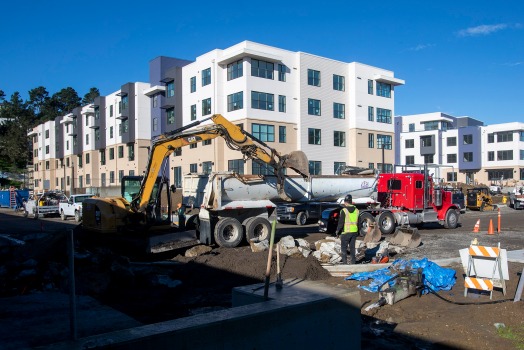Those little-used soccer and baseball fields and the overgrown, vacant school lots could be the key to creating more affordable homes for Bay Area teachers.
California has roughly 75,000 acres of school property on large lots that could be developed — more than all of the land in Oakland and San Francisco combined, according to a new study released Tuesday. The Bay Area makes up about 10% of all of the prime developable school properties in the state.
With rents climbing past pre-pandemic levels in many cities and record home prices, the demand for affordable teacher housing has gotten even more intense. Berkeley and UCLA researchers found more than one-third of teachers who are tenants are considered rent-burdened, paying more than 30% of their incomes toward housing.
Jeff Vincent, director of the Center for Cities + Schools at UC Berkeley, said high housing costs have caused high turnover rates in many school districts, as young teachers seek out more affordable regions to continue their careers. But, he added, new research shows some possible solutions.
“There seems like quite a lot of opportunity in every county,” Vincent said. “Virtually every neighborhood has one school in it.”
The study found ample possibilities for local education authorities to turn large parcels of at least one acre in size into new homes and apartments for teachers. The five, core Bay Area counties have 7,600 acres of school property ripe for potential development, led by Santa Clara County (3,084 acres), Contra Costa County (2,209 acres) and Alameda County (1,367 acres), according to the analysis. The study found 900 prime sites, although it did not identify specific properties.
School districts in every Bay Area County have shown a willingness to develop educator housing, including San Jose, Oakland, San Francisco and West Contra Costa unified districts, according to researchers.
Schools have already been hard hit by declining student populations, as fewer couples are having families and settling in the high-cost region. Several school districts, such as Oakland Unified, are considering shutting or merging campuses.
Districts are also acknowledging that teacher shortages and turnover are having the greatest disruption on disadvantaged students from poor communities, researchers said. “Addressing the housing affordability challenges that so many teachers face is an important step in both attracting and retaining teachers and improving outcomes for California’s students,” said Elizabeth Kneebone, the research director at Berkeley’s Terner Center.
Troy Flint of the California School Boards Association said the problem for teachers is particularly acute in the Bay Area. “It’s a stretch for teachers to find housing anywhere, but especially around the urban cities,” he said. “You’ve seen so many people leaving the profession altogether.”
The median teacher pay in San Francisco and the East Bay is about $86,000, and about $90,000 in the San Jose metro area, according to a recent study by online broker Redfin. But the Bay Area median home price now exceeds $1 million, and rents have returned to pre-pandemic levels.
The new study was a collaboration by researchers from Berkeley, UCLA’s cityLAB, and the California School Boards Association. The Chan Zuckerberg Initiative, an active funder of subsidized teacher housing, paid for the study. Researchers included a roadmap for school leaders considering new development on publicly-owned property, including how to navigate local land use policies and politics, financing and construction.
But efforts to redevelop school property often run into community resistance from neighbors. Daly City residents fought a proposed high rise development because it would replace a community garden. City leaders eventually granted initial approval to the Jefferson Union High School District for a 22-acre project that is expected to generate millions of dollars in lease payments to the district and provide affordable housing. School leaders plan to use the additional funds to raise teacher salaries.
Jim Canova, a 30-year veteran of the Santa Clara Unified School District school board, said the district has had a long experience with operating teacher housing.
The district’s 70-unit Casa del Maestro community reduced the teacher attrition rate by two-thirds compared to similar districts nearby, according to the study. The subsidized teacher housing has a waitlist, and 8 in 10 residents stay as long as they are allowed.
But Canova said the warning signs are clear: high housing costs still are driving people away.
“Families are leaving,” he said, “and that’s our future.”



















